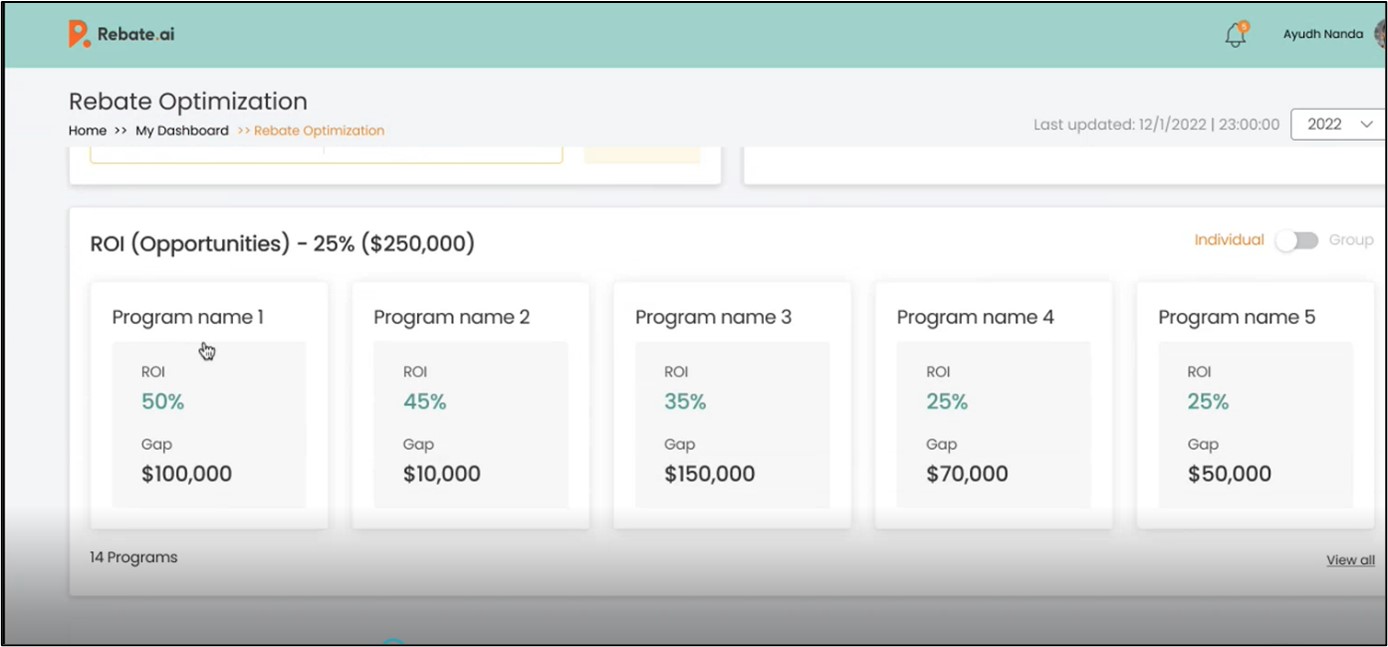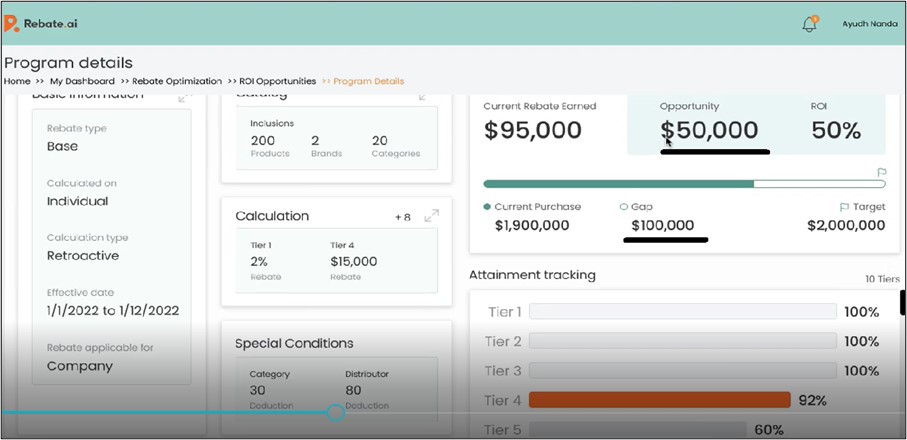Key Performance Indicators (KPIs) are crucial yardsticks to measure your business’s success. They are used to evaluate business and stakeholder performance, optimize rebate program management, and indicate areas for process improvement.
Since KPIs are used across industries and business functions, companies at times use a set of broader measures such as targets met or profits realized to measure how their people and business are doing. This, however, will not propel your business forward, according to thought leader Bernard Marr. Good KPIs should align well with organizational goals, be small in number and serve as tools to empower your people to do better and act decisively.
Let us take a look at what good KPIs need to measure to set your business on the desired path. The right KPIs
- Track daily business metrics: KPIs keep track of your day-to-day business performance and help you understand how your business is progressing towards its goals. They track your business’s overall health and measure process outcomes and stakeholder metrics. The right KPIs also warn you about minor issues that might turn crucial, if unattended, in the long run.
- Serve as stepping stones to long-term goals: A five-year business plan can be achieved by breaking it down into realizable, measurable, and actionable short-term KPIs. These KPIs must be evaluated on a daily, weekly, or monthly basis and the learning used to meet long-term milestones.
- Should cascade down into the simplest granularity: As we see above, a KPI that looks unachievable can seem within reach when it is broken down into manageable components. These components can be split across timelines, departments, or process steps. For example, an overall rebate revenue target of 10% can be broken up into actionable smaller KPIs such as targeting specific companies because they offer a higher rebate
- Help in identifying opportunities: KPIs disclose patterns within a department or sphere of activity. For instance, a real-time overview of the various elements of a rebate ecosystem such as demand for a product, buying trends, programs with increased ROI, buying group member participation, and high-performing rebate programs surfaces patterns that can feed into good decision-making and boost rebate revenue.
- Motivate good performers: Motivation in the form of incentives, rewards, coupons, and loyalty programs is a time-tested and fail-proof approach to nurturing talented employees and fostering trade partner relationships.
Are in alignment with core values: In pursuit of short-term financial rewards, many organizations fail to look at the bigger picture. The right KPIs ensure you are on track to meet short-term and long-term milestones without compromising your business’s vision and mission.
To develop the best-suited KPIs for your business and to articulate its benefits to all the stakeholders, it is a good idea to follow the systematic and practical Measure-Perform-Review-Adapt (MPRA) approach.
The MPRA approach to implementing the right KPI system
Measure: In an evolving business landscape, you cannot predict the course of any complex initiative, such as your rebate management program. The best way to minimize losses is to measure what you want to achieve. For that, you need to
- Identify objectives and actionable outcomes
- Designate the right KPI for each objective-outcomes pair
- Document and track the performance of the KPIs
Perform: Performance reviews are carried out regularly to identify where teams are doing well, where they are not, and how they can be helped. To do this, Set performance targets and thresholds for pre-defined periods and
- Implement improvement initiatives to help employees meet these targets
Review: In this stage, the huge volume of performance data is fine-tuned into evidence-based knowledge. This is achieved by
- Visualizing performance data for deep and meaningful interpretation
- Drawing conclusions that feed into an iteration of the above two steps for continuous process improvement
Adapt: This stage identifies those strategies and improvements that were most beneficial and those that were not. This stage helps decide if the organization has to follow the same KPIs for the future, recalibrate some of them, or bring in new ones, to achieve business benefits. This stage ends with
- Reporting the performance of the strategies and
- Reviewing the metrics to interpret and suggest improvements for the next planning cycle.
Devising separate KPIs to measure sales growth, stakeholder engagement, customer retention, and profit margin help in taking small steps to achieve the bigger business goals.
Building and tracking the right KPIs across the areas of your business in today’s interconnected digitized ecosystem will benefit from the assistance of specialized technology-driven tools
An AI-powered rebate management platform for smart KPI management
Tredence’s Rebate.ai is a comprehensive rebate management solution that will help your teams identify and track KPIs to optimize rebate management. Our automated, cloud-based, smart rebate management platform can tap into the unique nature of your rebate programs and partnerships to recognize the right KPIs and drill them down to the simplest granularity.
Here is an example of how Rebate.ai leverages the right cascading KPIs to drive improved rebate earnings.
Below is the screengrab from the Rebate.ai platform, showing five different supplier programs, considering Return on Investment (ROI) as the KPI. To increase the overall rebate percentage, each program is ranked based on its ROI, such as 50%, 45%, 35%, and so on.

Once you enter into a program, it displays further details about the product. In this example, the screengrab below of program 1 shows the basic details of that particular program. It also indicates if you purchase $100,000 worth of products from this product set, you will earn an additional $50,000 rebate.

Each tier in the attainment tracking section represents the milestones that will increase your rebate percentage. The above scenario denotes that it takes $100,000 of purchases to fully achieve tier 4 and earn $50,000 as rebates. Once tier 4 is accomplished, ROI calculations progress to tier 5. This real-time, granular view of program RoI aids teams in deciding the right mix of programs to unlock maximum rebates while hitting procurement goals.
A dedicated rebate management platform empowers your teams to boost rebate earnings
The success or failure of any rebate program is determined through parameters specific to that particular rebate program. That said, KPIs are the best tool to optimize your rebate management with a focus on profitability and business growth.
Schedule a demo with our experts to learn how our smart rebate management platform can help you build and track cascading KPIs across partners and programs to enhance your rebate earnings multifold.


